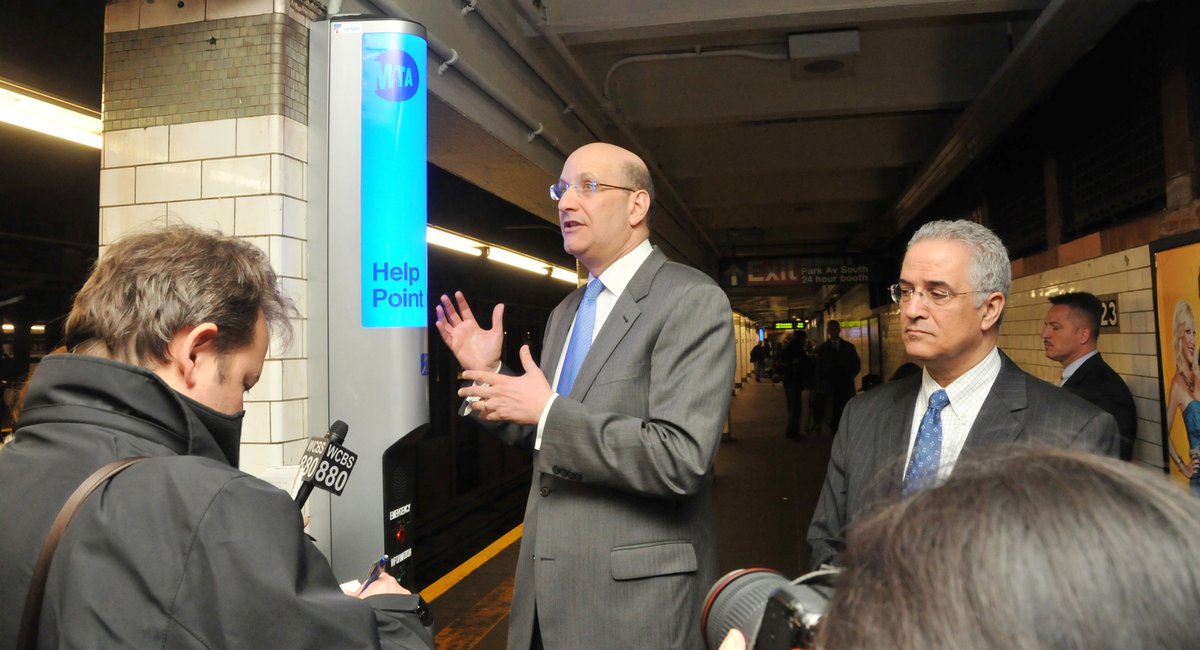Prank callers are jamming up the lines on the “Help Point” intercom boxes inside New York City subway stations, according to a report published on Tuesday by the MTA inspector general’s office.
The intercom boxes with blue lights on top have a button for riders to push when they need information and another when they need to report an emergency. But the report found half of the roughly 140,000 calls made through the agency’s network of 3,000 help boxes from May through October of last year were “mischief calls,” or people spamming the system.
Roughly 28% of the calls made during that period were from riders who actually needed help, while the other 22% were from crews testing the equipment, according to the report.
“The Help Point system is important for public safety, and an immediate response to genuine emergency calls is crucial,” MTA Inspector General Daniel Cort wrote in a statement.
The MTA spent roughly $250 million to install the Help Point system. They first began to appear in stations back in 2011 and the system was fully rolled out in 2018.
The inspector general report also found MTA employees didn’t answer 1,200 emergency calls made through the boxes, which are supposed to be used by the public to report dangerous situations like a person on the tracks.
The report also found that calls made by pushing the boxes’ “emergency” buttons were not prioritized over calls made from the “information” buttons. The report notes the MTA answered 75% of all the emergency calls made through the boxes in 15 seconds or less — lower than the national standard of 90% for 911 calls.
“Help Points supplement police presence and the 911 system that’s accessible to anyone with a phone,” MTA spokesperson Meghan Keegan wrote in a statement. “We’ve closely reviewed the Inspector General’s recommendations concerning Help Points and are evaluating ways to improve their effectiveness.”
To cut down on the number of prank calls, the inspector general recommends adding a camera to the boxes so the MTA staff that answer calls can identify repeat “mischief call” offenders. It also recommends adding a sticker warning of misuse and possibly creating a $50 penalty for making fake calls.
The MTA’s official response published in the report argues the agency’s staff takes calls from many locations, including elevators and station booths, and that prioritizing Help Box calls could lead “to the detriment of the Stations Supervisors’ responsibilities related to the other types of calls.”

Leave a Reply